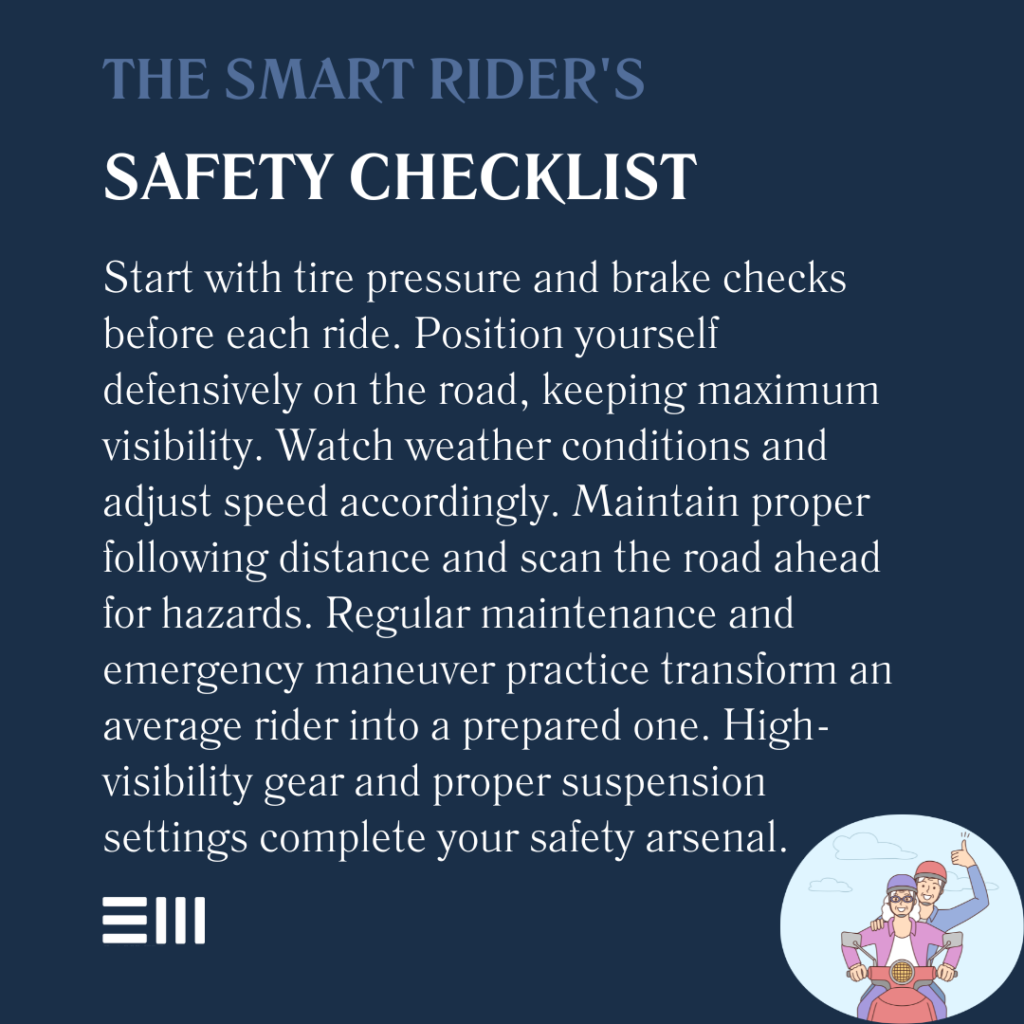
The freedom of riding through Alabama’s winding roads can transform into a battle for survival in a split second.
A patch of loose gravel on a sharp curve, an unexpected pothole hidden in shadows, or a sudden oil slick from recent rain–these silent adversaries challenge even the most experienced riders.
While most motorcycle safety discussions focus on collisions with other vehicles, it’s often the road itself that poses the greatest threat to riders across Birmingham, Mobile, and Montgomery’s diverse terrain.
Understanding Road Hazards and Their Impact
Road conditions play a defining role in motorcycle safety, creating unique challenges that car drivers rarely face.
Whether navigating through Birmingham’s busy streets or cruising along coastal highways, riders must remain vigilant against these often-overlooked dangers.
Common road hazards include:
- Potholes and pavement irregularities that can destabilize motorcycles instantly;
- Loose gravel and sand patches, particularly dangerous on curves;
- Oil slicks and wet surfaces that reduce traction dramatically;
- Construction debris and materials left on roadways;
- Uneven road surfaces and expansion joints that catch tires;
- Fallen branches and roadside debris from storms;
- Railroad tracks and metal gratings that become slippery when wet; and
- Shoulder drop-offs and edge breaks that can trap wheels.
When encountering these hazards, motorcyclists often face split-second decisions that can mean the difference between safety and serious injury.
Statistics show that riders who regularly scan the road 12 to 15 seconds ahead significantly reduce their risk of hazard-related accidents.
Prevention and Safe Riding Strategies
Before hitting Alabama’s roads, motorcyclists should understand proven techniques for managing unexpected hazards.
Essential safety measures include:
- Regular motorcycle maintenance checks, with special attention to tire condition;
- Proper tire pressure monitoring, adjusting for temperature changes;
- Defensive riding position maintenance, staying visible to others;
- Weather condition awareness and route planning accordingly;
- Route planning and familiarization with road conditions;
- Appropriate gear selection, including high-visibility clothing;
- Speed adjustment for conditions, especially in construction zones;
- Increased following distance to improve reaction time;
- Regular brake system inspections and maintenance;
- Proper suspension adjustment for road conditions;
- Mirror positioning for maximum visibility; and
- Regular practice of emergency maneuvers.
These preventive steps form your first line of defense against road hazard accidents, helping you maintain control when unexpected situations arise. Riders who implement these strategies report feeling more confident and prepared on the road.

Legal Rights and Responsibilities
Alabama motorcyclists have specific rights when road conditions contribute to accidents. Understanding these rights helps protect your interests after an incident, particularly given Alabama’s complex liability laws and the modified comparative negligence system.
Key legal considerations include:
- Government liability for road maintenance defects;
- Construction company responsibilities for work zone safety;
- Property owner obligations regarding road debris;
- Insurance coverage implications and policy limits;
- Statute of limitations for different types of claims;
- Evidence preservation requirements and documentation;
- Alabama’s contributory negligence rules affecting compensation;
- Documentation requirements for government claims;
- Time limits for reporting incidents;
- Rights regarding road design defects;
- Maintenance contractor liability; and
- Traffic control device failures.
Knowing these legal aspects ensures you can take appropriate action if a road hazard causes an accident.
What to Do After a Single-Vehicle Crash
The moments following a motorcycle accident are critical. Taking the right steps immediately after the incident strengthens your position for any future legal action and ensures proper documentation of all relevant factors.
Important post-accident actions:
- Document the scene thoroughly with photos and video;
- Photograph all road hazards from multiple angles;
- Collect witness information and statements;
- Report the incident officially to local authorities;
- Seek immediate medical evaluation, even for minor injuries;
- Preserve damaged equipment and riding gear;
- Contact insurance providers promptly;
- Record weather conditions and visibility;
- Note any nearby surveillance cameras;
- Measure and document skid marks;
- Collect debris samples if relevant; and
- Document time of day and lighting conditions.
These actions create a solid foundation for addressing any resulting legal or insurance matters. Remember that evidence at the scene can disappear quickly, making immediate documentation crucial.

Common Questions About Road Hazard Accidents in Alabama
Understanding the complexities of road hazard accidents in Alabama helps riders better protect their rights and interests.
Here are detailed answers to frequently asked questions about motorcycle accidents involving road hazards.
How Long Do I Have to File a Claim in Alabama?
In Alabama, you generally have two years from the accident date to file a personal injury claim. However, claims against government entities may have shorter deadlines, sometimes as brief as six months. Missing these deadlines can permanently bar your right to compensation.
What if the Road Construction Caused My Accident?
Construction companies have a legal duty to maintain safe road conditions and proper signage. If their negligence caused your accident, they may be liable for your damages. This includes improper warning signs, inadequate barriers, or debris left in the roadway.
Can I Claim Damages for Poor Road Maintenance?
Yes, government entities responsible for road maintenance can be held liable, but these claims have specific requirements and shorter filing deadlines. You must prove the authority knew or should have known about the hazard and failed to address it within a reasonable time.
Will My Insurance Cover a Single-Vehicle Crash?
Coverage depends on your policy type. Comprehensive and collision coverage typically handle single-vehicle accidents, while liability-only policies may not. Understanding your coverage before an accident helps prevent surprises during the claims process.
How do I Prove a Road Hazard Caused My Crash?
Document everything immediately: photographs, witness statements, police reports, and medical records all help establish the connection between the hazard and your accident. Expert testimony may also be necessary to demonstrate how the hazard contributed to the crash.
Take Action to Protect Your Rights
When road hazards turn your motorcycle ride into an unexpected ordeal, you need experienced legal guidance to navigate the aftermath.
Our team understands the unique challenges motorcyclists face and stands ready to help you secure the compensation you deserve.
Contact our motorcycle accident attorneys today for a consultation. Let us help you understand your options and take the first step toward recovery.
Can't find what you're looking for? Search our site below.










